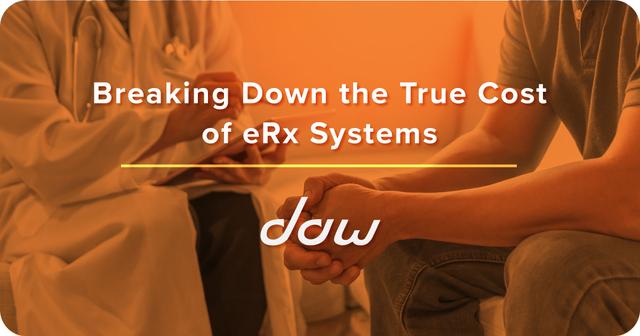Breaking Down the True Cost of eRx Systems
E-prescribing software can transform how your practice works. But when evaluating vendors, it’s easy to focus only on the headline price—and miss the fine print.
In reality, the true cost of eRx systems goes beyond the subscription. From licensing to compliance, support, and hidden add-ons, healthcare practices must look at the full picture to make a smart investment.
Here’s what you need to know before you commit.
Core Pricing Models in eRx Systems
Different vendors approach pricing in different ways. The most common models include:
Per-Provider Subscriptions
Most cloud-based eRx solutions charge a monthly or annual fee per provider using the system. This usually includes basic access and some support.
Per-Transaction or Script Fees
Some vendors charge based on usage—either per prescription or per patient. This can become costly as volume grows.
Bundled with EHR Systems
eRx modules embedded in larger EHR platforms may appear "free" but often lack flexibility and clarity on pricing—especially for EPCS or compliance tools.
Free or Open-Source Tools
While low upfront cost is appealing, these often require manual setup, hosting, and support—all of which incur time and money later.
What’s Typically Included in eRx Pricing
Here’s what’s often covered in a standard pricing tier:
- Basic e-prescribing functionality
- Drug and allergy interaction checks
- Access to drug databases (First Databank, Medi-Span, etc.)
- Limited support and onboarding
- EPCS features (though some charge extra)
- Reporting tools for audit prep
Not all systems include everything in base pricing—especially EPCS, training, or cloud hosting.
Hidden Costs to Watch For
Some eRx vendors keep base pricing low, but layer on additional fees later:
- Setup & Onboarding Fees — charges just to get started
- Support Fees — billable calls or limited support hours
- EPCS or DEA Certification Costs — sometimes a paid add-on
- Software Updates or Patching — not always included in base plan
- Data Export/Migration Fees — if you ever want to switch vendors
- On-Prem Hosting Costs — if the vendor doesn’t offer cloud-based access
These costs add up—and can lead to dissatisfaction if not disclosed upfront.
The Hidden Cost of Doing Nothing
It’s tempting to delay implementation or settle for a sub-par solution. But that decision comes with its own costs:
- Regulatory Risk — failing to meet EPCS or DEA mandates
- Inefficiency — wasted staff time with manual or disconnected workflows
- Frustration — users burning out on outdated tech
- Errors — patient safety issues from prescribing mistakes
The wrong eRx system (or none at all) costs you far more than licensing fees.
How ScriptSure Keeps Costs Transparent and Value-Focused
At DAW Systems, we believe in straightforward pricing with no surprises. That means:
- Simple per-provider pricing
- DEA/EPCS features included at no extra cost
- No setup or onboarding fees
- Cloud-hosted—no IT overhead for your team
- Unlimited support from our in-house team
- Free updates and enhancements included
We’ve designed ScriptSure to be a value-forward solution—built to save you time, protect your patients, and grow with your practice.
Conclusion: Know What You’re Paying For—And Why
When comparing e-prescribing systems, cost isn’t just about the number on the invoice. It’s about:
- What’s included
- What you’ll pay later
What headaches you avoid
With ScriptSure, you get clarity, reliability, and total cost transparency from day one.
Want to see what ScriptSure would cost your practice—no strings attached?


